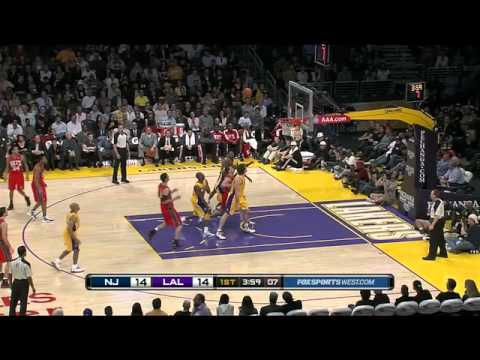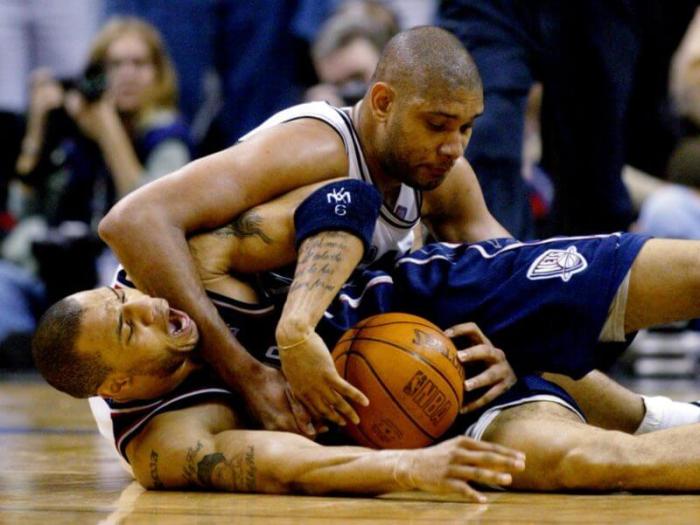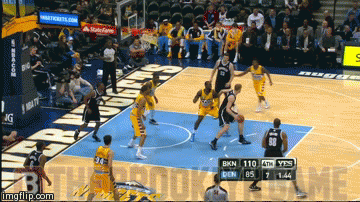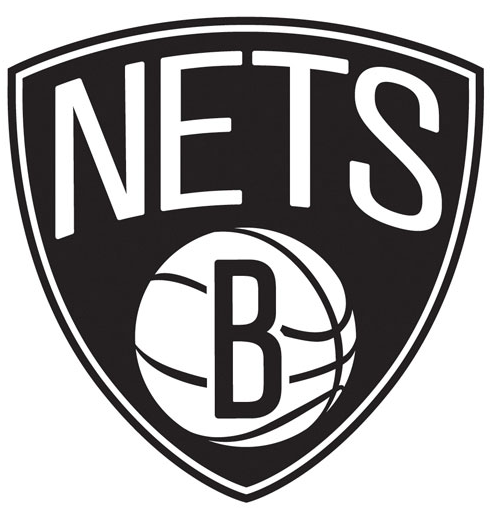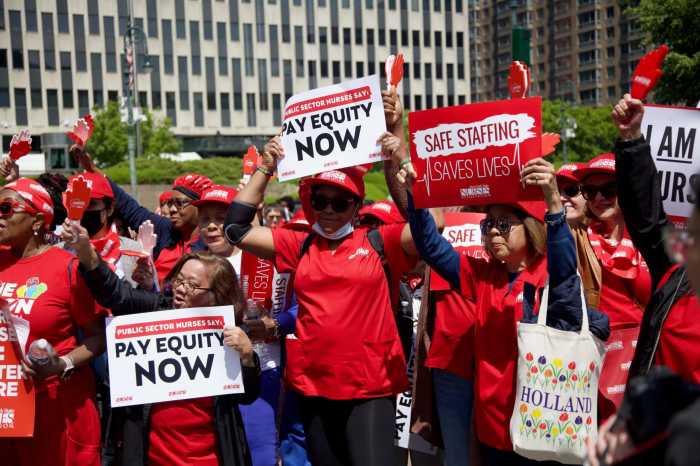
There’s been a lot of talk recently about Brook Lopez on the glass. (Or, I should say, not being on the glass.) It’s valid criticism; Lopez hasn’t had a double-digit rebounding game since the first of December and his total rebound rate has actually dipped below the league average (9.8%, league average is 10%). I haven’t excused that, and still won’t. That being said, his rebounding issues aside, there’s one thing that Brook Lopez is finally starting to do at an elite level:
Score.
In the first half of this season, we were treated to perhaps the worst Brook Lopez we’d seen so far – a 7’2″ behemoth constantly missing midrange jumpers and not crashing the glass. At that point, he was no more effective than a Nick Young or Richard Hamilton. His per-game averages were afloat, but not because of efficient scoring – his field goal percentage had dropped into the low-mid 40’s. For a guy that’s supposed to operate in and around the paint, that’s eerily low. It was approaching Jason Collins territory.
(I will now pause to smash my head into a wall for 20 minutes for comparing Brook Lopez to Jason Collins.)
(……)
(Okay, back.)
In the past month, all of that has changed. In the 15-game span since January 12th, Lopez has been blistering – averaging over 22 points per game while shooting 53.8% from the field and 84.6% from the free throw line, all well above his season averages. To give it some context, the only player in the NBA who’s approaching averaging those percentages for the season is Kevin Garnett, and he only averages 15 points per game. Not bad company.
Not only is Lopez scoring efficiently, he’s also doing so while using a high volume of possessions – in only one game did he take fewer than ten shots (he took 9) and is averaging 16.5 shots per game. We’ve seen back-to-back 30-point games on the road against Portland and Los Angeles (the good one), a three-game stretch in which he took 58 shots and made 35 of them (60.3%), and of course, a game-winner against Cleveland with 1.5 seconds left to top off a 28-point performance.
It’s safe to say that rebounding issues or not, the Brookie Monster is getting back to business putting the ball in the basket.
Once he’s got the ball, Lopez is noticeably more aggressive & quicker on his feet. In the Los Angeles game, he showed off his full array of moves – face-up jumpers, hook shots, spin moves, and dunks. Even against long, strong defenders like Gasol & Bynum (Gasol is underrated as a post defender – he’s 11th in the NBA at defending the roll man and only allows 0.8 points per possession in the post), Lopez was still able to weave his way through the defense and get close, efficient shots.
In this video, you can see some of the things Brook has been working on. The face-up game is there, as is the backdown and hook shot with either hand. He’s attacking the rim with more ferocity than he did in previous months and using his highly advanced footwork and shot fakes to freeze defenders. He’s also using his body – specifically his shoulder – to create space for the ten-foot jumper. My favorite play is the one that starts at 43 seconds; it’s an up-and under that fakes both Gasol and Bynum out of their shoes. It’s absolutely gorgeous.
Brook also has weapons in the pick & roll:
Here, you can see both his ability to maneuver in traffic to lay it in, as well as his ability to spot up. After he sets the screen, the 3’6″ Fisher is forced to switch onto Lopez, and Lopez just shoots over him. Shooting it was the right play – if he tries to start posting up from that far out, the Lakers would have had time to switch back or even double him. When a guy that small is on him, he’s basically uncontested.
Watching the games and analyzing the numbers, there’s a few factors at play here. Firstly, I think it’s safe to say that Lopez has regained most of the strength that he’d lost to summertime mononucleosis. Brook was getting banged around nightly, not looking to get to the rim on most defenders (Hasheem Thabeet excluded, as he is from everything), but recently he’s been able to get much more close to the basket. Even if he posts up far from the block (which he’s still doing occasionally), he’s still able to use his strength & footwork to back his defender down and float that six-to-seven foot jump hook as opposed to an 11-footer. In a game of inches, four feet means the world.
Plus, if you’re still curious about his strength, I don’t think any play makes it clearer than the game-winner he hit in that game while Ryan Hollins literally played the bongos on his back.
His strength deserves credit, but there’s more to this story. The resurgence of Devin Harris has been huge for Brook. His slashing to the basket has created literally dozens of these opportunities. Harris has exhibited a ton of patience recently; more often than not you can see him letting a play develop instead of forcing passes or wasting chances. In these circumstances, it’s not about allocating individual credit, but how they play in tandem to create scoring opportunities that benefit the team. The synergy is undeniable.
Thirdly, it’s important to note that the Nets just hadn’t been running many sets for Lopez in the first half of the year. It may have been Avery trying to figure out the other weapons on the team, it may have been an attempt to hide his post-mono weakness, it may have been no more than a random statement. Either way, it caused Brook to force bad shots the times he did get the ball. Now that the offense is consistently going through him, he’s able to effectively pick his spots.
But don’t just believe me. The numbers don’t lie. Prior to this stretch, Lopez was shooting just 54.2% at the rim on only 3.8 attempts per game. In the past 15 games? 73.6%, on 4.8 attempts per game. While in the first 37 games Lopez only received assists on at-the-rim shots 52.9% of the time, that figure has jumped to (a coincidental) 73.6% in the past 15 – over a 20% jump in assisted makes. Most of those assists are from Harris.
In the videos, you see the two basic ways the Nets get Brook the ball – a standard pick & roll or letting him fight to get position on the low block. One of my favorite plays the Nets are running for Brook these days is a little more complicated: a double back-pick curl leading into the two-man game. It starts off with Harris bringing the ball up on the left side, then receiving a screen from Lopez on the left wing. Harris shifts to the right, keeping control as Lopez curls around two screens to the block. From there, Lopez either posts up or can set a screen for Harris, playing the two-man game on the right side while the rest of the team spots up on the left.
Here’s the play in FastDraw:



The Nets ran this play at least four times against the Cavaliers in their 103-101 victory, and you can see the results for yourself:
When watching these four possessions, really look at how Lopez instantly fights for position once he finds the block. Even if the double back pick isn’t effective, he’s still able to lose his man and create opportunities with the movement. The amount of options out of this play is what makes it great: Lopez can dominate a smaller defender, Harris can look to create off the dribble in tandem with a Lopez screen, and if the help defense overplays the post Morrow spotting up in the right corner is as good as gold.
Brook Lopez isn’t rebounding. There’s no question. He may never become a great rebounder, or even a good one. But what he’s becoming right now is a great, efficient scorer, and there’s a lot of value in that. You can count the great offensive big men in the league right now on one hand. In December, I would’ve left Lopez off that hand. Now? He’s back on the list.
And the best part? He’s only 22. There’s a lot of room left to grow.

